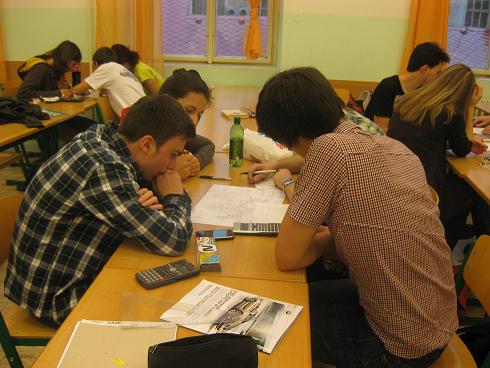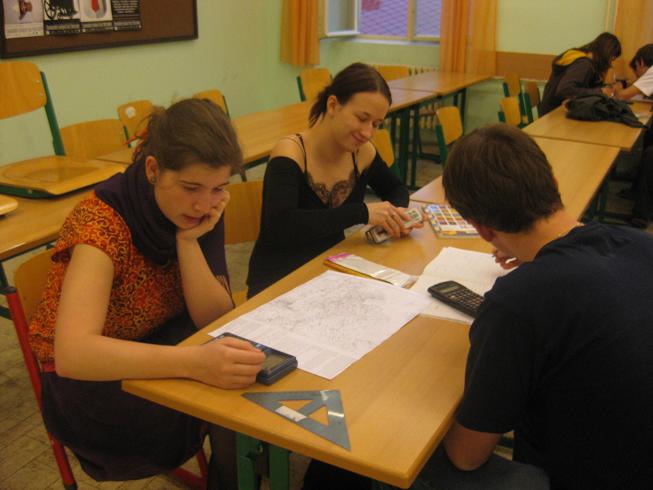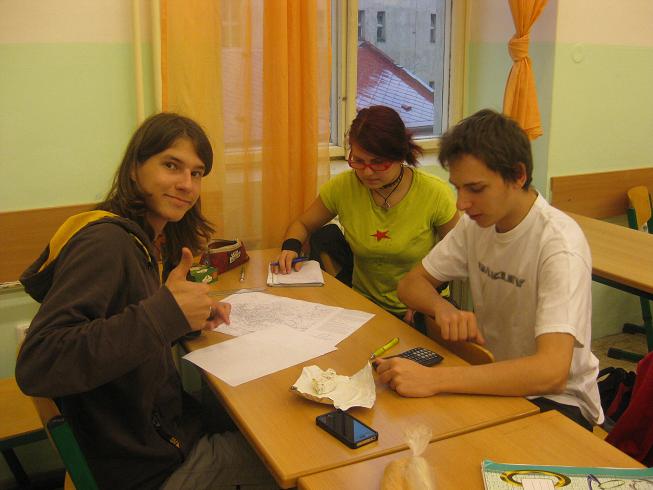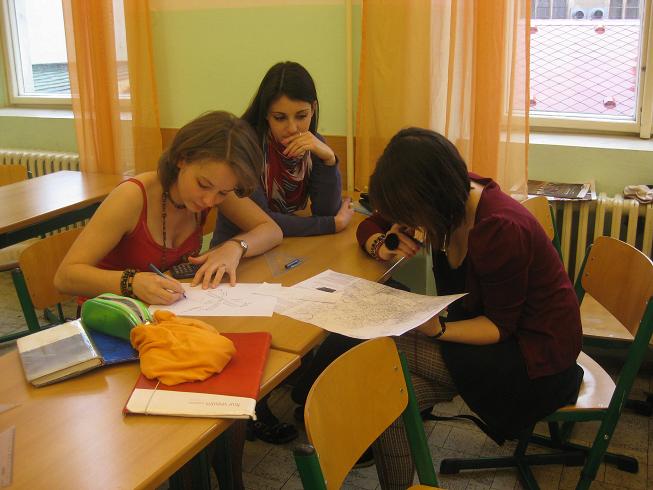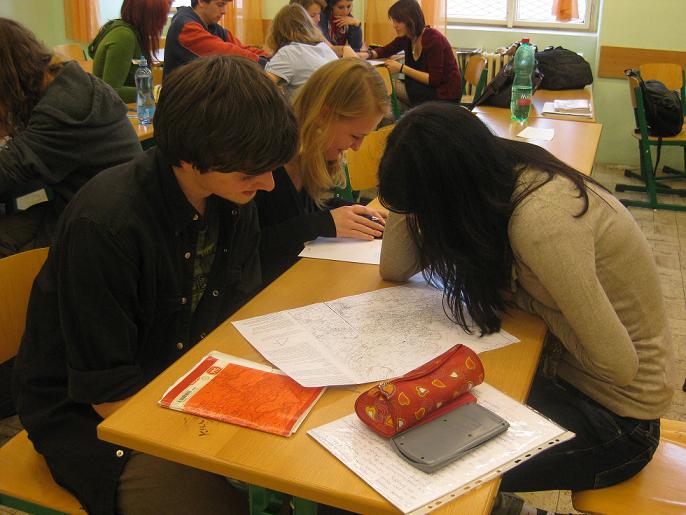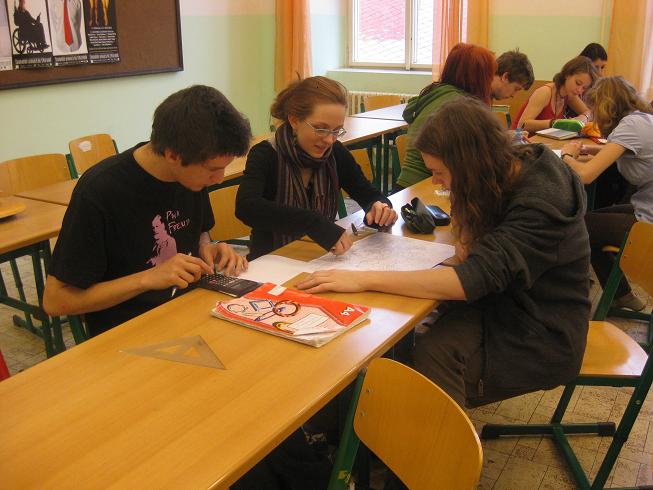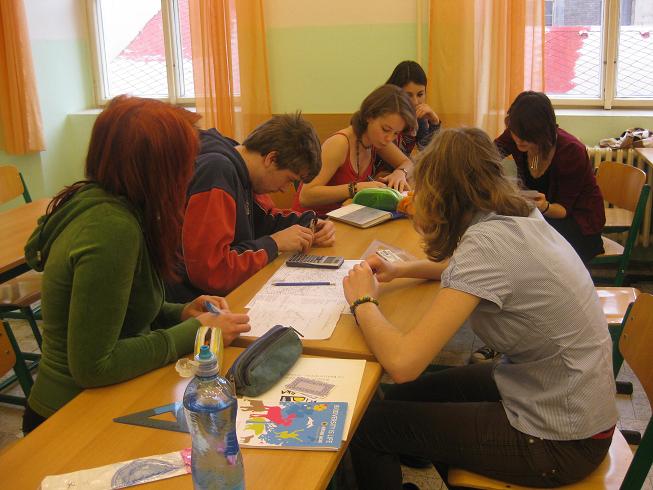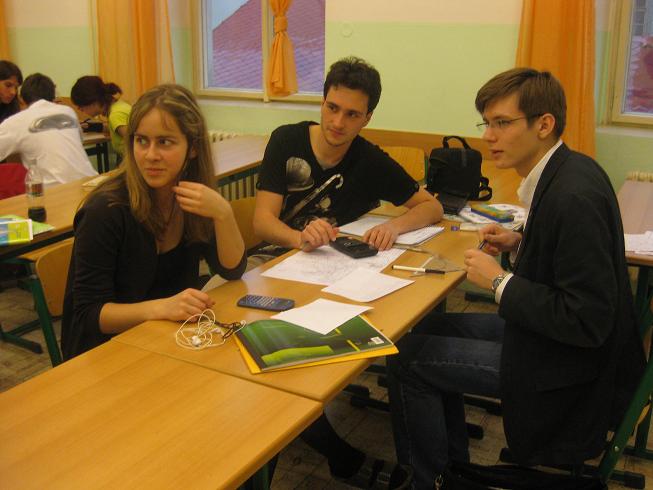-
Laboratorní práce 4.B (2012/2013) - Meření Youngova modulu pružnosti v tahu dvěma metodami
Laboratorní práce 3.A, 3.B (2011/2012) - Přibližné určení průmeru molekuly kyseliny olejové
-
Projekt - souřadnice GPS (2010/2011)
Studenti 6.A nejdříve "zakódovali" město v Evropé pomocí časů, které potŕebují 3 signály ze 3 družic na dosáhnutí GPSky. Pak si skupiny své zakódovaná města vyměnili a jejich úkolem bylo vyluštit příslušné město.
The Global Positioning System (GPS) is a modern technology that has changed the face of navigation forever. Based on a network of over 30 satellites, it broadcasts signals that anyone with a GPS receiver can use to pinpoint their location on Earth to within a few metres.
The GPS has a vast range of applications. Every day it is used by a diverse group of people including drivers, pilots, surveyors, construction workers, farmers, couriers, hikers, and many others. Economically, it plays a critical role in industries that are worth billions of dollars annually.
A key feature of the GPS is the fact that the signals it broadcasts include incredibly precise timing information. To facilitate this, each GPS satellite houses an atomic clock capable of measuring time to within a fraction of a nanosecond. The GPS is so precise it must take into account the effects of Einstein’s theory of relativity-both special relativity and general relativity.
Special relativity tells us that ‘moving clocks run slow’. The faster an object moves relative to us, the slower we see its time passing. General relativity says that gravity slows down time. The closer an object is to a large mass, the slower time passes. Together, these two effects mean that clocks inside GPS satellites run faster than clocks in GPS receivers on Earth. If not corrected, this would lead to timing errors that would result in GPS measurements rapidly accumulating errors. These errors would build up at the rate of 11 km per day. So, far from being purely abstract and detached from reality, Einstein’s theory of relativity is critical to the operation of an extremely practical technology.
This resource uses the GPS as a vehicle to introduce students to Einstein’s theory of relativity and includes a fiveminute in-class video and an accompanying teacher’s guide. It also touches on a number of other topics including satellite motion, geometry, energy, and precision.
